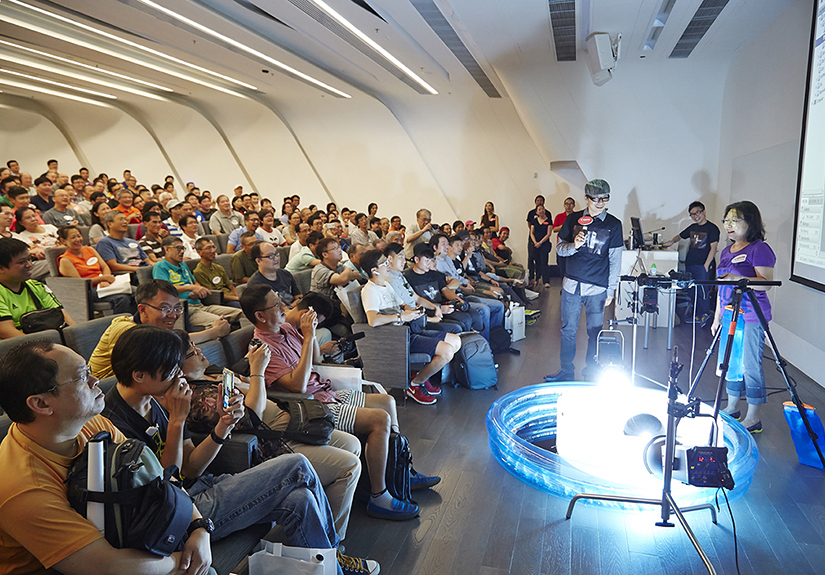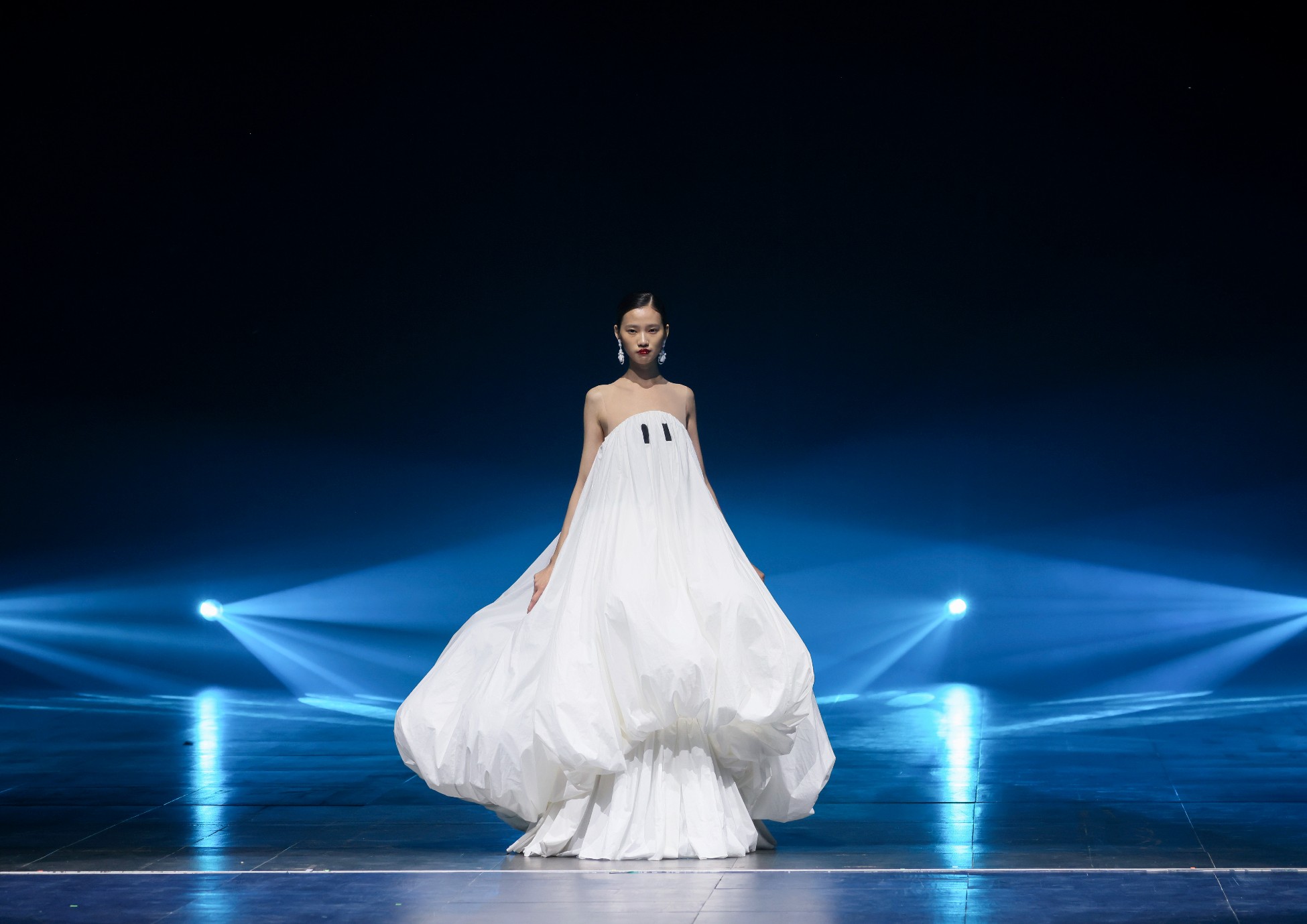Canon “FOR EXPERT • BY EXPERT” Presents
“The Chase For Speed” Seminar Highlights
This year, Canon Hongkong presents "The Chase for Speed" exhibition and seminars focusing on high-speed photography through its "FOR EXPERT • BY EXPERT" professional photography platform. Following the success of the kick-off seminar featuring professional photographer Raymond Ng which has received overwhelming responses among photo enthusiasts, Create Images and Brian Ching – two renowned industry players – have shared their extensive experience and tips on photographing Formula One racing cars and capturing the perseverance of sportsmanship using Sequence Shot technique respectively on 23 August, demonstrating the professionalism and unique artistic charm of high-speed photography through vivid presentations on these two entirely different kinds of sports.
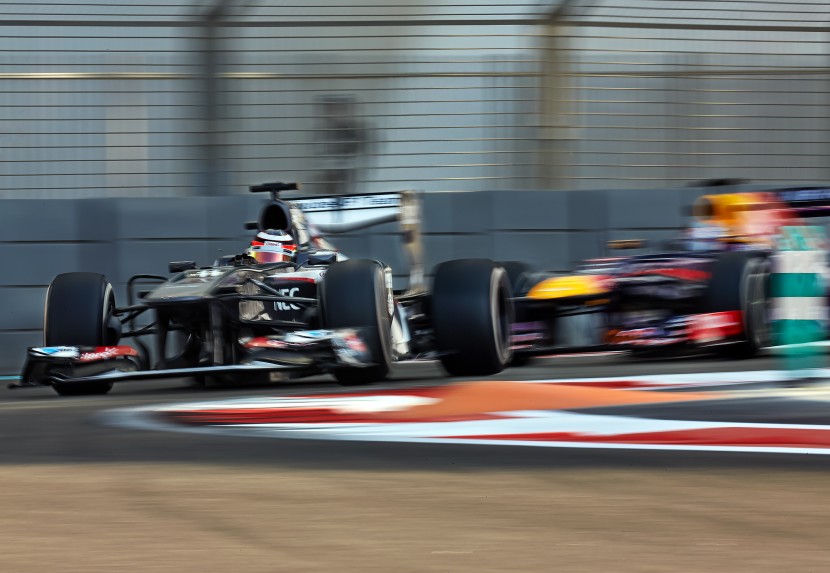
High-Speed Photography for Formula One Racing Cars
With strong photography experience in the Formula One World Championship, Create Images is the only agency in the Greater China region with FIA Formula One World Championship Photographer's Permanent Accreditation and they have held the Permanent Pass for eight consecutive years. According to professional photographer Thomas, it all depends on the ears but not the eyes to capture breathtaking moments on the fast-changing racing circuit. The sound of engines and brakes are the best hints during the race. The capability to distinguish the sound levels and features means a higher chance to capture a thrilling shot.
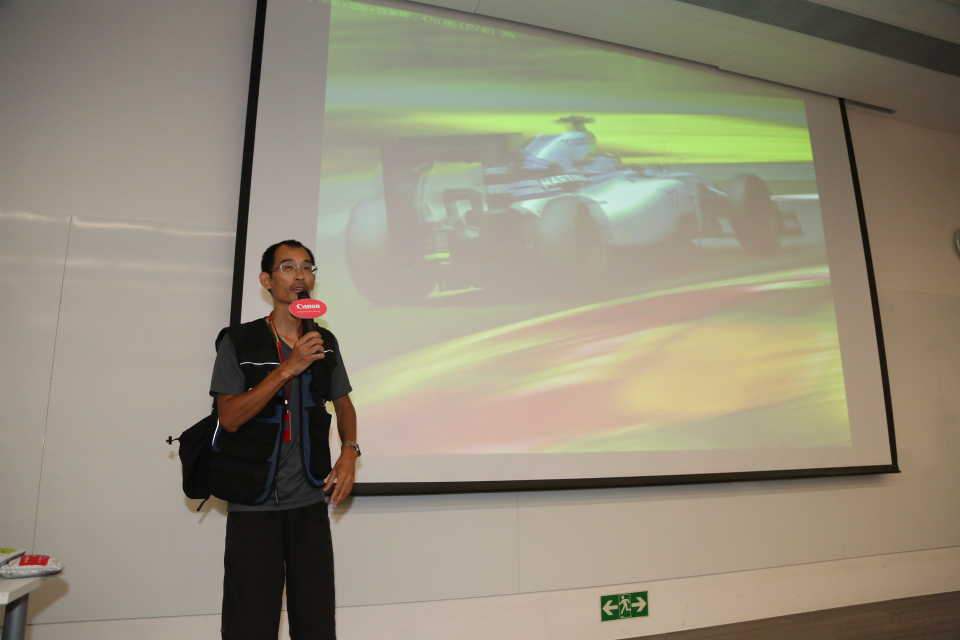
Thomas shared many racing car photos on the seminar and explained the uniqueness of each photo in details.
Opportunities are for Those Who are Prepared
Good preparation is key in order to capture a perfect, stunning shot of the high-speed F1 racing car. In addition to understanding the unique features and weather conditions of different circuits, photographers also need to be familiar with the rules. Thomas explained, “You just can’t leave it to chance to capture a car crash. A research on the accident black spots of the circuit prior to shooting can increase your chance to capture the split-second crash scene.” Besides, professional photographic equipment are also indispensable. During the seminar, Thomas put on his full gear for F1 photography, allowing the participants to have a detailed look at the equipment and belongings required. Since it is a race against the clock in the world of F1 photography, photographers must master their equipment well in order to react in time when a shooting opportunity arises.
Good preparation is key in order to capture a perfect, stunning shot of the high-speed F1 racing car. In addition to understanding the unique features and weather conditions of different circuits, photographers also need to be familiar with the rules. Thomas explained, “You just can’t leave it to chance to capture a car crash. A research on the accident black spots of the circuit prior to shooting can increase your chance to capture the split-second crash scene.” Besides, professional photographic equipment are also indispensable. During the seminar, Thomas put on his full gear for F1 photography, allowing the participants to have a detailed look at the equipment and belongings required. Since it is a race against the clock in the world of F1 photography, photographers must master their equipment well in order to react in time when a shooting opportunity arises.
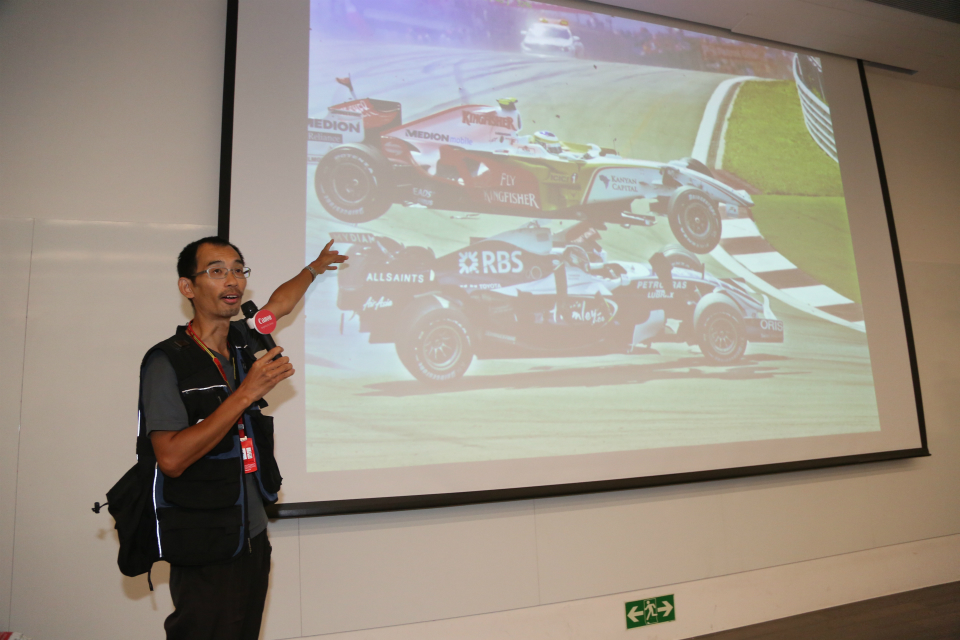
Heart-shaking scene of car crash may happen at the accident black spot. Always put safety first when shooting.

Thomas wore full gear of equipment and showcased them to the participants one by one.
Capture an Athlete’s Action with Sequence Shot
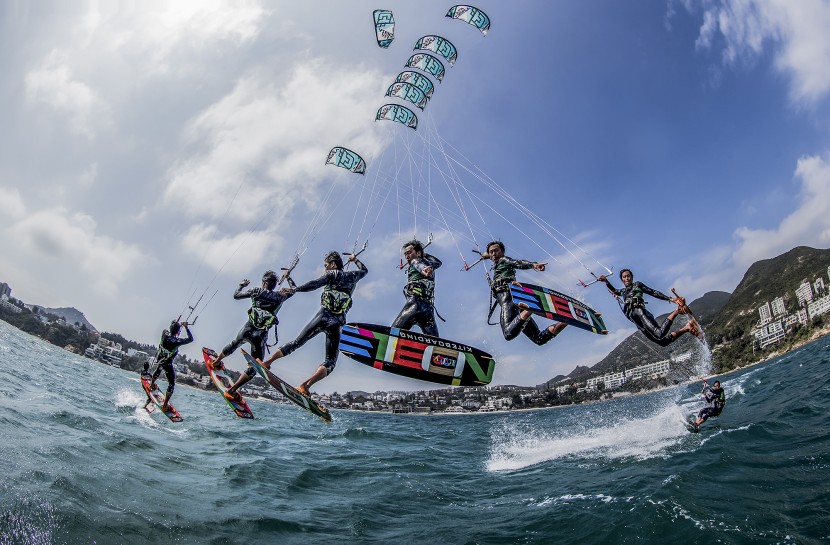
Professional photographer Brian Ching prepared a series of photographs showcasing the physical limits of athletes for this event. He captured the body movements of athletes using Sequence Shot technique to demonstrate their perseverance of sportsmanship. Brain said, “Although the physical speed of an athlete is not as high as that of a racing car or explosive object, it is still a very challenging task to capture the high-speed movements of an athlete pushing their own physical limits.” The greatest challenge, among many others, in creating this series was to find suitable shooting locations in Hong Kong. The background takes on an important role to complement the athlete who is the main character in the photos. Take soccer photography as an example. An empty stadium will ruin a photo no matter how amazing the action is in the photo.
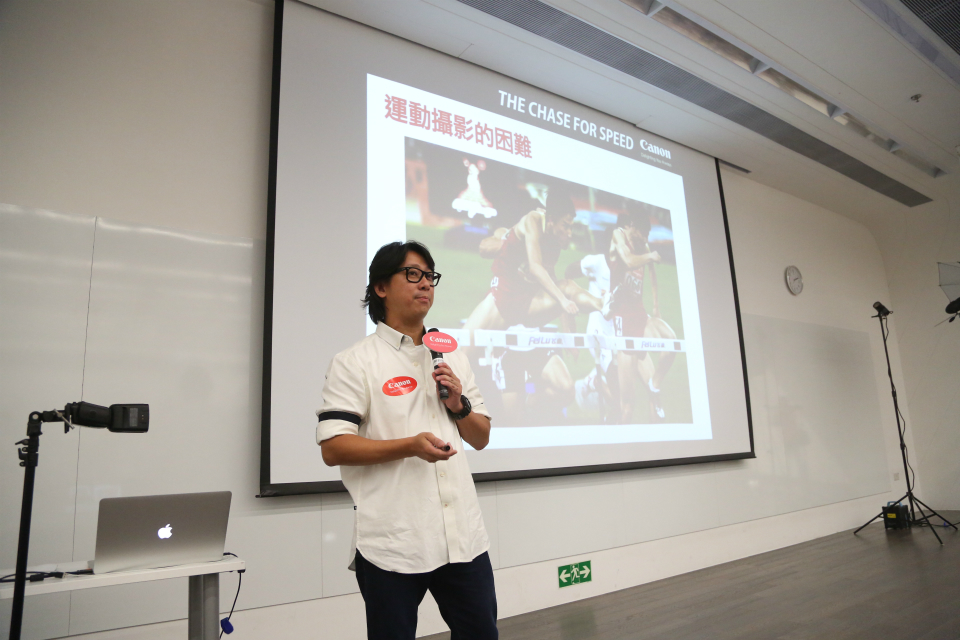
Brian explained the importance of bold attempt in sports photography using a photo of Liu Xiang crossing the hurdle as example.
Build Trust with the Athletes
Brian believes that it is important for the photographers to be familiar with the rules and characteristics of sports so that they can predict and capture the amazing actions using Sequence Shot technique. In addition, good communication and trust building between the photographer and athlete are also important. Prior to shooting, the photographer has to let the athlete know about the shot he is expecting to get, as well as when to press and release the shutter. Based on these information, the athlete can have a blueprint for their movements, thus increasing the chance for a successful capture.
Brian believes that it is important for the photographers to be familiar with the rules and characteristics of sports so that they can predict and capture the amazing actions using Sequence Shot technique. In addition, good communication and trust building between the photographer and athlete are also important. Prior to shooting, the photographer has to let the athlete know about the shot he is expecting to get, as well as when to press and release the shutter. Based on these information, the athlete can have a blueprint for their movements, thus increasing the chance for a successful capture.
Freeze the Split-Second Action of Street Dance
In order to allow the participants to experience the fun of sports photography, Brian invited some of them to capture the skilful dance steps performed by two street dancers on the spot. After a sequence of dance steps was captured by the participants, Brian demonstrated the use of post-editing software to combine the actions into one single image. He reminded that a careful selection of photos was required – only photos that can showcase the continuity of sports and capture the grace and completeness of movements should be used. Therefore the post-editing process requires long hours of concentration and patience in order to superimpose a sequence of amazing actions.
In order to allow the participants to experience the fun of sports photography, Brian invited some of them to capture the skilful dance steps performed by two street dancers on the spot. After a sequence of dance steps was captured by the participants, Brian demonstrated the use of post-editing software to combine the actions into one single image. He reminded that a careful selection of photos was required – only photos that can showcase the continuity of sports and capture the grace and completeness of movements should be used. Therefore the post-editing process requires long hours of concentration and patience in order to superimpose a sequence of amazing actions.
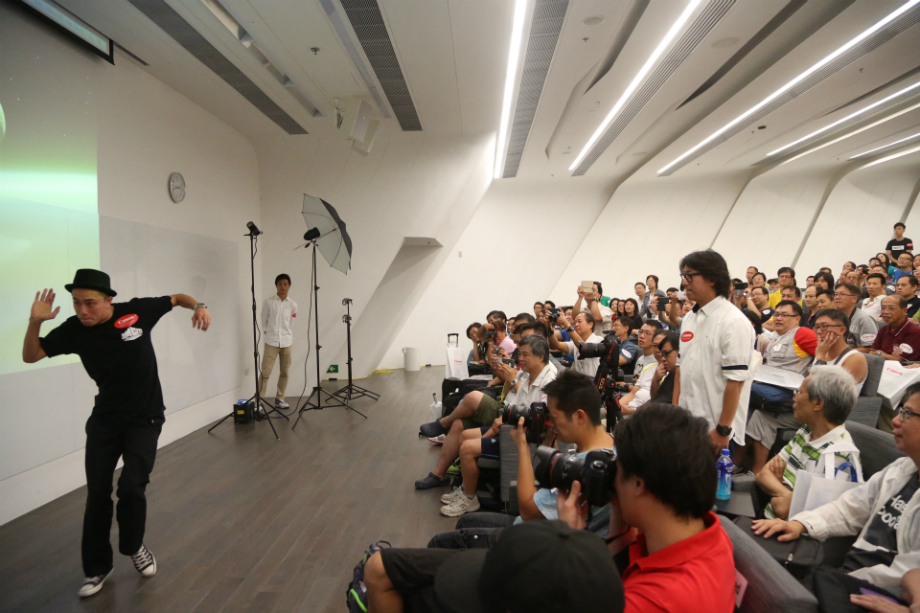
Brian demonstrated how to capture of action of dancer.
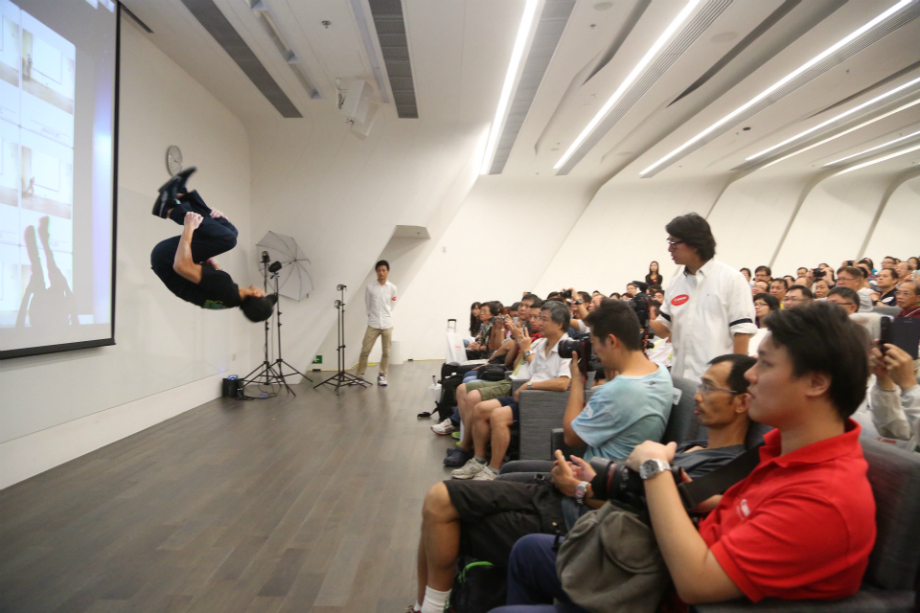
This mid-air somersault by the dancer was a stunning moment to shoot and won rounds of applauses.
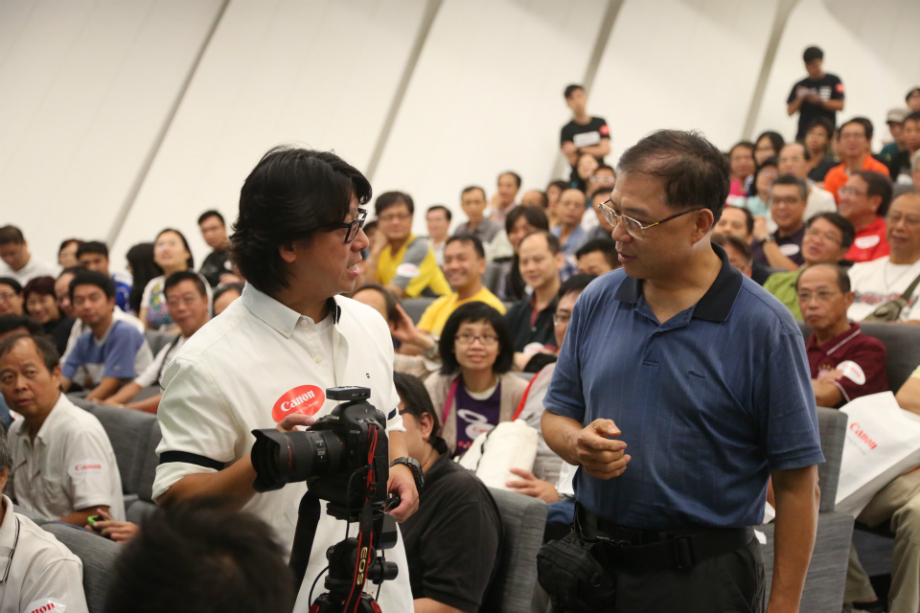
Brian invited a participant to try taking high-speed photos.
High-speed photography demands a high level of skills and technical mastery of equipment of photographers. It also requires practices and trials to create a perfect shot. Once mastered, everyone can create beautiful dynamic shots and enjoy the excitement of high-speed photography.


